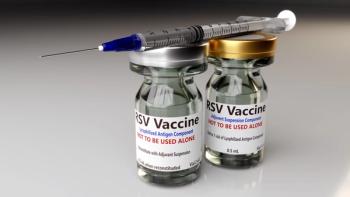
USPSTF Updates Cervical Cancer Screening Recommendations
What type of cervical cancer screening should a woman get, if any, and how often? The latest recommendation from the United States Preventive Services Task Force (USPSTF) said Tuesday that it depends on a woman’s age and other factors.
What type of cervical cancer screening should a woman get, if any, and how often? The latest recommendation from the United States Preventive Services Task Force (USPSTF) said Tuesday that it depends on a woman’s age and other factors, but those 30 or older have a new option.
The
To update its 2012 recommendation, the USPSTF reviewed evidence on screening for cervical cancer, looking at clinical trials and cohort studies that evaluated screening with high-risk
For women aged 30 to 65, there are 2 options: screening by either a Pap test every 3 years, or a Pap and hrHPV test every 5 years. The recommendation is a slight change from draft guidelines, which recommended that women get just 1 test, instead of a cotest.
Overall, the USPSTF gave an “A” recommendation to screening women aged 21 to 65 years, but did not recommend testing for those younger than 21 and or older than 65.
For women aged 21 to 30, screening should be done by a Pap test every 3 years.
Under current law, preventive services receiving an A or B grade must be covered by most private insurance plans with no co-pay for patients. Other screening tests and services with different grades are up to the payer.
As over 99% of all cervical cancers are associated with HPV, testing for the infection has been touted as an alternate option for cervical cancer screening. Previous research has indicated that HPV testing alone or combined with a Pap smear is linked to increased detection of precancerous lesions in the first screening round, followed by a subsequent reduction in precancerous lesions.
In a joint statement, 3 of the nations’ top women’s healthcare groups called the recommendation “largely in line” with clinical guidance with their own.
“With a number of screening options now available, the new guidelines emphasize the importance of the patient-provider shared decision-making process to assist women in making an informed choice about which screening method is most suitable for them,”
Screening women who have had a hysterectomy with removal of the cervix for indications other than a high-grade precancerous lesion or cervical cancer does not offer any benefit, the USPSFT said.
Reference
US Preventive Services Task Force. Screening for cervical cancer: US Preventive Services Task Force recommendation statement. JAMA. 2018;320(7):674-686. doi:10.1001/jama.2018.10897.
Newsletter
Stay ahead of policy, cost, and value—subscribe to AJMC for expert insights at the intersection of clinical care and health economics.














































